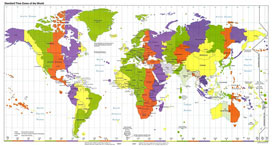|
||||||||||||||||||||||||||||||||||||||||||||||||||||||||||||||||||||||||||||||||||||||||||||||||||||||||||||||||||||||||||||||||||||||||||||||||||||||||||||||||||||||||||||||||||||||||||||||||||||||||||||||||||||||||||||||||||
|
|
||||||||||||||||||||||||||||||||||||||||||||||||||||||||||||||||||||||||||||||||||||||||||||||||||||||||||||||||||||||||||||||||||||||||||||||||||||||||||||||||||||||||||||||||||||||||||||||||||||||||||||||||||||||||||||||||||
|
||||||||||||||||||||||||||||||||||||||||||||||||||||||||||||||||||||||||||||||||||||||||||||||||||||||||||||||||||||||||||||||||||||||||||||||||||||||||||||||||||||||||||||||||||||||||||||||||||||||||||||||||||||||||||||||||||
|
|
||||||||||||||||||||||||||||||||||||||||||||||||||||||||||||||||||||||||||||||||||||||||||||||||||||||||||||||||||||||||||||||||||||||||||||||||||||||||||||||||||||||||||||||||||||||||||||||||||||||||||||||||||||||||||||||||||
|
|
|
|||||||||||||||||||||||||||||||||||||||||||||||||||||||||||||||||||||||||||||||||||||||||||||||||||||||||||||||||||||||||||||||||||||||||||||||||||||||||||||||||||||||||||||||||||||||||||||||||||||||||||||||||||||||||||||||||
However, a number of places in the US, Canada, Austrailia and other countries elect to not observe DST. For example in the United States, most of Indiana, and all of Arizona, Hawaii, and Puerto Rico do not observe DST. In Canada, Saskatchewan does not observe DST but what they did, sometime during the 1940's, was to permanently change the entire provence from Central time to Mountain time, which has the same effect as having Daylight Savings time year around! (Thanks to W.M. Hanover for pointing this out!) In Australia, Queensland, the Northern Territory and Western Australia do not participate in Daylight Saving. This means that Australia has both horizontal and vertical time zones in summer!! This is further complicated by the fact that since Austrailia (and other Southern Hemisphere countries like New Zealand, South Africa, Argentina, etc.) generally observe Daylight Savings opposite of the Northern Hemisphere, in their summer months. Gee, this is complicated! Fortunately, Chrysanthemum Enterprises LLC has a handy chart as to when various countries observe DST. Commonly, which time a particular locale is observing is denoted by the second character within a abbreviation. For example EST means Eastern Standard Time, EDT means Eastern Daylight Time. ET simply means Eastern Time and varies at different times of the year. Here is a page with more information on abbreviations. My interest in knowing when
various cities around the world observed DST started when I
purchased a Citizen NaviHawk World Time Chronograph while in
Munich, Germany on business in 1995. Unfortunately, the
instruction manual that came with the watch did not shed any
light on the subject. So any setting of the summertime
functions involved a substancial amount of guesswork.
Fortunately, Citizen has recently started selling a new
model of the NaviHawk outside of the United States with a
manual that has a handy time chart for time differences
between the cities on the watch and UTC (or GMT) time.
Craig Joseph Poff wrote and posted a
well written review of
the new model Citizen "Navihawk 3" on TimeZone
which mentioned the existance of this chart. I emailed Craig
and he was kind enough to fax me a copy of the chart which
is recreated below: |
||||||||||||||||||||||||||||||||||||||||||||||||||||||||||||||||||||||||||||||||||||||||||||||||||||||||||||||||||||||||||||||||||||||||||||||||||||||||||||||||||||||||||||||||||||||||||||||||||||||||||||||||||||||||||||||||||
|
||||||||||||||||||||||||||||||||||||||||||||||||||||||||||||||||||||||||||||||||||||||||||||||||||||||||||||||||||||||||||||||||||||||||||||||||||||||||||||||||||||||||||||||||||||||||||||||||||||||||||||||||||||||||||||||||||
 Click to see a medium (57k) or a full sized (580k) version of this map... |
||||||||||||||||||||||||||||||||||||||||||||||||||||||||||||||||||||||||||||||||||||||||||||||||||||||||||||||||||||||||||||||||||||||||||||||||||||||||||||||||||||||||||||||||||||||||||||||||||||||||||||||||||||||||||||||||||
|
Permission is granted for Damon, Derek Ziglar, Ross or RJ to include within the FAQ's they are writing as long as credit (and a link to this article) is given. Permission for personal, educational or non-commercial use is granted. The author retains all other rights not specifically mentioned here... For all other use please contact the author. Disclaimer: Opinions are my own and knowing me should be taken with a grain or two of salt...
|
||||||||||||||||||||||||||||||||||||||||||||||||||||||||||||||||||||||||||||||||||||||||||||||||||||||||||||||||||||||||||||||||||||||||||||||||||||||||||||||||||||||||||||||||||||||||||||||||||||||||||||||||||||||||||||||||||